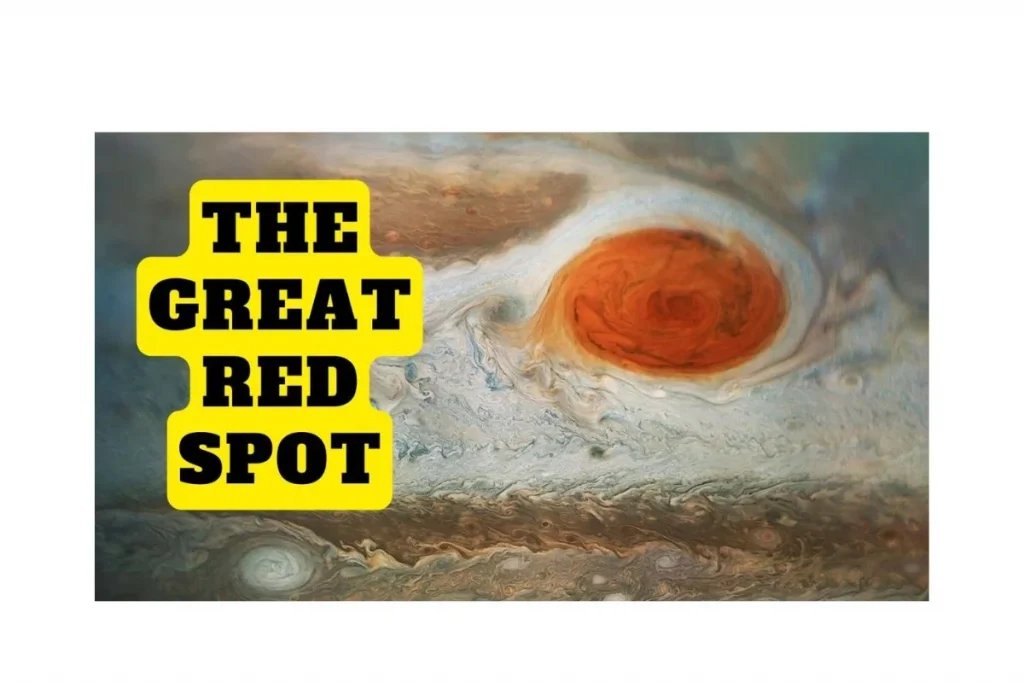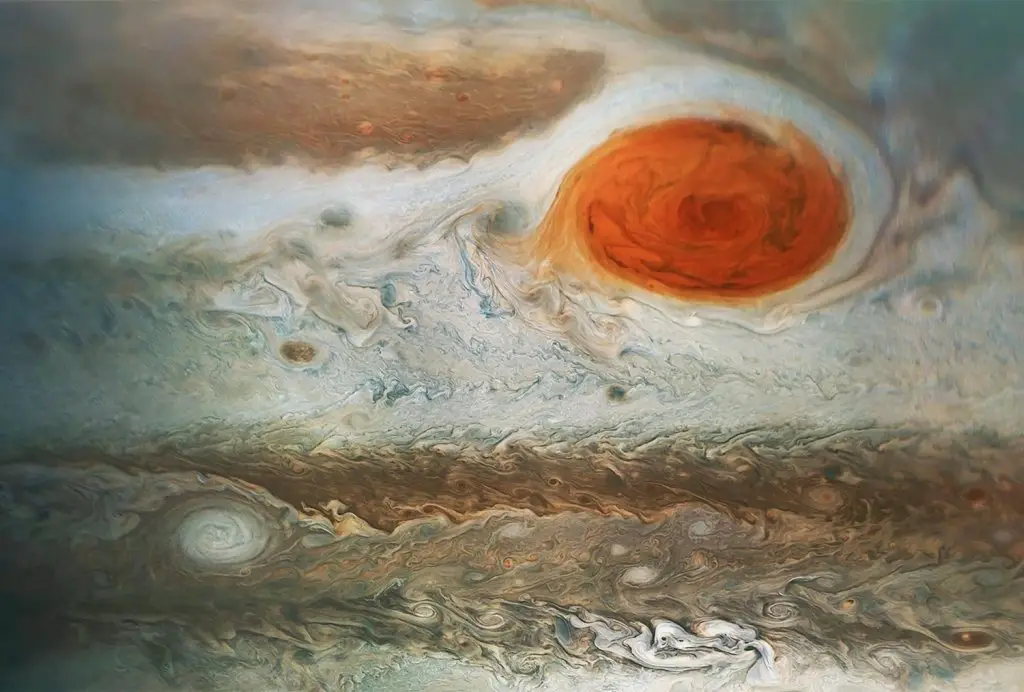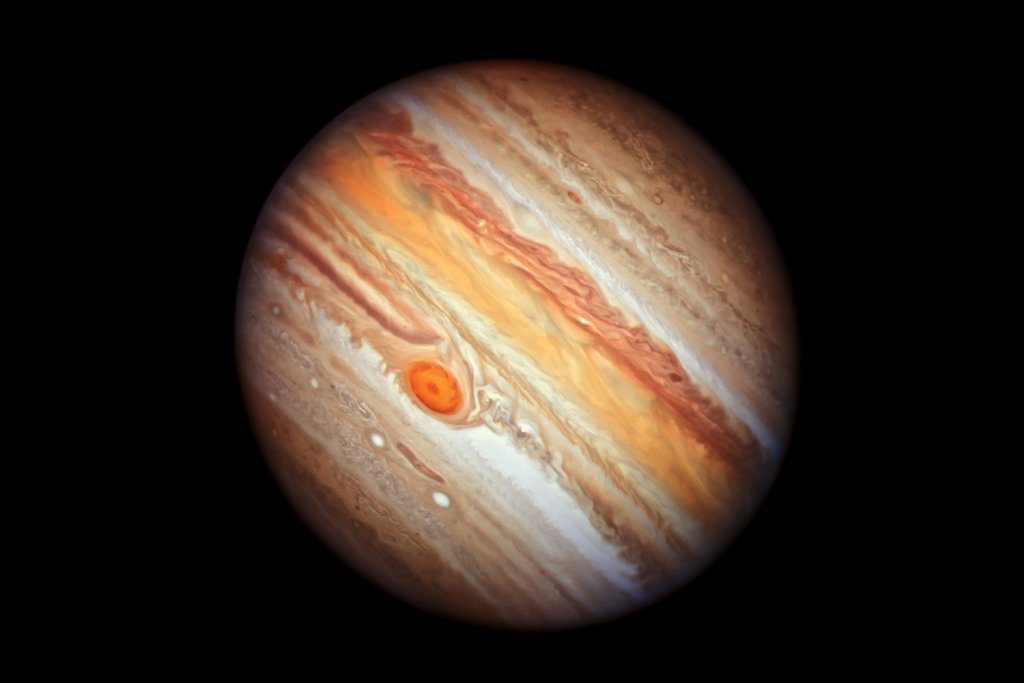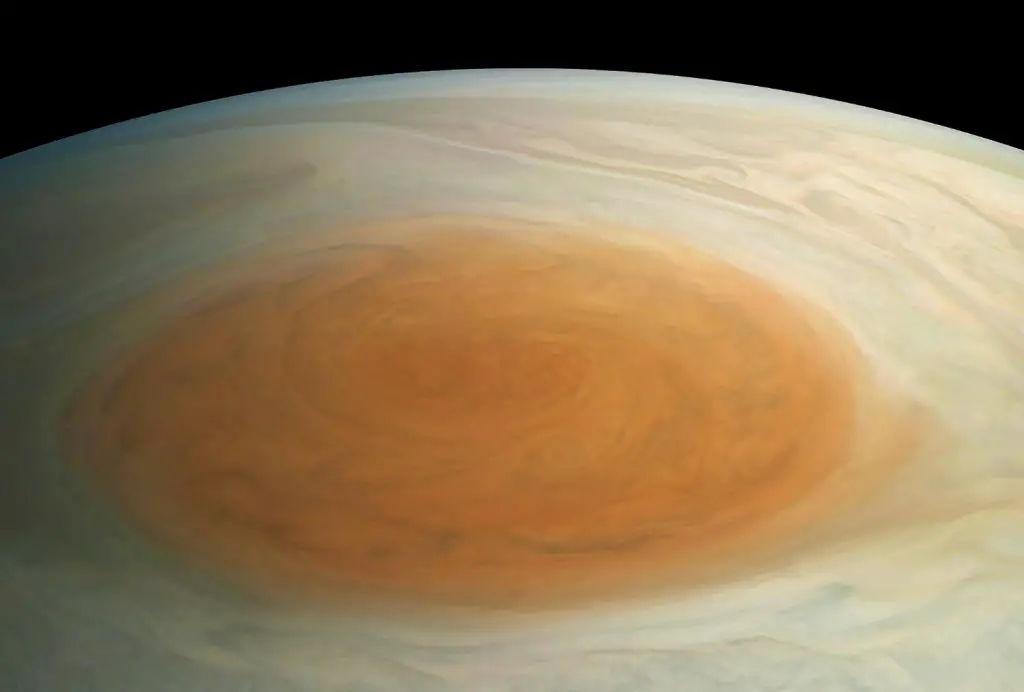
The Universe is full of interesting wonders and Jupiter being the biggest planet in the solar system holds no exception as well. There are various interesting facts surrounding this ginormous planet, but did you know that the Great Red Spot of Jupiter the planet houses has been a subject of debate among astronomers?
The Great Red Spot of Jupiter has never failed to spark curiosity among astronomers. Observations show that it has lasted for more than 357 years in space, which describes it as an extremely persistent anticyclonic storm. The Great Red Spot of Jupiter is located to the south of Jupiter’s equator and can produce winds speeds up to 268 mph. It is 1.2 times wider than planet Earth.

Quick facts
- The Great Red Spot of Jupiter is an extraterrestrial storm that has been raging for more than three centuries now.
- Samuel Heinrich Schwabe recorded the Great Red Spot for the first time in 1831 and stories about the storm date back to 1665.
- The Great Spot is located south of the equatorial belt of Jupiter at 22 degrees South.
- The storm is reddish in color but due to shrinkage in size, it is turning into concentrated orange color.
- Did you know that the Red Spot of Jupiter can change its color?
It can turn brick red as well as turn pale salmon in color or even white. - The Great Red Spot of Jupiter is oval in shape and measures around 16,350 kilometers which is 1.3 times bigger than our planet Earth.
- The Great Red Spot of Jupiter is shrinking in size at a rate of 900 kilometers per year.
- Winds on the Great Red Spot of Jupiter blow at 430 – 680 kilometers per hour
- The Great Red Spot of Jupiter takes 14 jovian days (6- 7 Earth days) to complete one rotation.

About the Great Red Spot of Jupiter
Jupiter is the largest planet in the solar system, twice as big as all the other planets combined. Therefore, no wonder, it has always sparked curiosity among scientists and astronomers.
7 spacecraft have visited Jupiter, including Pioneer 10 and Voyager. It was through Pioneer that astronomers and scientists could learn interesting facts about the giant planet. The spacecraft sent back pictures of the planet which included the Great Red Spot and Galilean moon among others.
Description of the Great Red Spot
The Great Red Spot is a giant oval storm that consists of whirling winds that travel anticlockwise. It was first observed by an amateur German astronomer Samuel Heinrich Sawabe in 1831 but records of this storm persist where astronomer Gian Domenico Cassini has also referred to this storm as the “Permanent Storm”.
Astronomers got the best glimpse of this wonder on 10th July 2017 when NASA’s Juno Spacecraft flew over the storm.
It was observed that wind speeds can reach as high as 679 kilometers per hour. The storm contains an eastward-moving atmospheric band in the north and a westward-moving atmospheric band in the south. These swirling bands have kept the storm raging for more than three centuries now. Also, the Red Spot tends to swallow small storms which helps it to keep spinning and even makes it more powerful.
Jupiter’s Great Red Spot penetrates its atmosphere at least 320km, based on the Juno data.
The characteristic ‘red’ color
If you wonder what gives the characteristic red color to the Great Red Spot on Jupiter, then scientists have observed that the color comes from the compounds that surround the planet, especially ammonia.
Cosmic rays present in the radiation in space also play an important part in the color of the Great Red Spot. White clouds formed from ammonia, ammonium sulfide, and water when hit by radiation splits into molecules that impart the red color to the Spot.
How long will it survive?
For more than 300 years, the Great Red Spot has existed, but it seems to be shrinking.
The longevity of the storm on Jupiter owes to the fact that Jupiter does not have any solid surfaces. Jupiter’s sky consists of ammonium hydrosulfide, ammonia ice, and vapor. Beneath these clouds exists an ocean of liquid hydrogen and below that is the core of the planet.
Astronomers and scientists suggest that when a storm reaches its optimal size, it remains at that size or stops growing until it breaks apart. The storm, which was once three times as large as Earth, now only stretches twice as wide.

So will it disappear?
Astronomers have kept robust observation data for the Great Red Spot of Jupiter since 1878. Combining and analyzing the data collected through spacecraft missions like Voyager Missions and Hubble Space Telescope, astronomers suggest that in the past that the Great Red Spot has grown and shrunk but the size of the storm has considerably shrunk.
Winds in the central region of the Spot are decreasing in speed, while winds in the outer zone are increasing. With the shrinking of size, the storm has grown taller and the color has increased in intensity. A storm’s color changing to orange could be due to more chemical reactions as new material is being brought up.
According to astronomers, the Great Red Spot has the probability of disappearing even in 10 to 20 years.
Jupiter not only houses the Great Red Spot but also some similar storms and eddies. One of the most popular is Oval BA which is nicknamed Red Spot Jr. or Little Red Spot. Three storms collided and formed this Spot in the southern hemisphere of Jupiter. In the future, it might even take place of the Great Red Spot.
In conclusion, it can be said that The Great Red Spot will always be a source of curiosity for astronomers and scientists alike. What will happen to the Great Red Spot can only be deduced in the future.
For more content on astronomy, check out our Website & Youtube channel.





